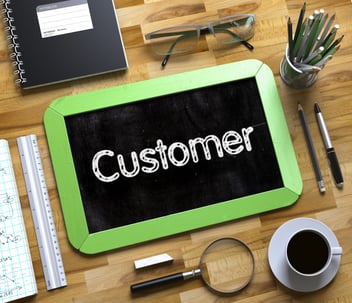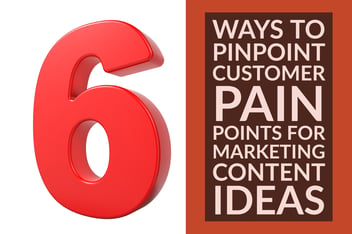Match Buyer Personas, Message & Content Across Departmental Lines
Who is your marketing content talking to? Who is PR reaching? And what message does sales need to target to maximize ROI and bring in the most profitable customers?
If those targets and message don’t align from one department to another, you have a problem. While there are different types of alignment (here’s a look at aligning goals and expectations between departments), aligning the main message across all departments in order to focus on the best possible customers can be achieved by first creating solid buyer personas.
What are personas?
In case you haven’t seen this definition in our other posts regarding personas (check out related articles here), buyer or customer personas are:
Fictionalized, generalized representations of your idea customers that help you understand your customers (and prospective customers) better and make it easier for you to tailor content to the specific needs, behaviors, and concerns of different groups.
What problems arise when you don’t create buyer personas?
-
You don’t know who your best customers are.
-
You can’t create the content your best customers need.
-
You can’t convert your best leads into customers.
But why do you really have to get sales, public relations AND marketing all involved in the process? We’ve heard about how too many cooks spoil the stew, and we’ve all been in those committee meetings of 15 people, which were about a dozen more than needed.
Here’s why:
-
It’s your sales team who really understands who the best customers are.
-
The PR team plays an important role in creating content, even if marketing is creating content as well.
-
Marketing can provide the link between PR’s content that attracts visitors and leads and turning those leads into customers.
Ask sales to ID their best customers and what those customers need.
Not all customers are equally desirable, and no one knows that better than the frontline sales team tasked with bringing new customers on board and keeping them happy. Start your persona development by engaging sales to determine which characteristics are typical of their best customers (those customers for whom your company has a good solution, who are repeat buyers, and who represent a high return/revenue stream in relationship to the difficulty of servicing the account).
By identifying the types of customers that provide the greatest return — and in conjunction, IDing those who are not a good or profitable fit — you can more effectively focus your messaging and content creation efforts.
Remember when creating personas to consider characteristics such as:
-
Industry
-
Job title/position
-
Demographics
-
Where they gather information
-
Challenges they face
-
Goals and objectives
(You’ll find full examples of buyer personas developed for JONES partner Wallop! in this downloadable file.)
Make sure PR understands the key problems those customers are trying to solve.
While your PR team may not be creating content designed to directly sell your solutions, the content they create has tremendous potential to position your company in the minds of prospective customers, through press releases, executive interviews in industry and general media publications, and thought leadership articles placed in industry blogs and other media outlets.
It is essential that public relations content have a foundation in the needs of your company’s ideal customers. By understanding the personas that make up your target market, PR writers and company execs can tailor their message based on the audience for each outlet. An example might be focusing on challenges surrounding cost and cash flow in content targeting CEOs and CFOs, while discussing challenges in training and software upgrades when addressing the COOs and HR management staff in the same industry.
Use marketing content that converts the best potential customers into leads, and then convert those leads into customers.
If your awareness level content — either from the PR department or marketing team — has gotten the attention of potential customers by addressing their challenges and needs, then use marketing content throughout the rest of the sales funnel that shows how you can help them address those challenges, first with useful content that is helpful on its own, and then with content that guides them toward making a purchase decision. And throughout the funnel, that content should be created with the specifics of your targeted customer personas in mind: What type of content do your ideal customers prefer? What information do they want before making a decision? When do they want to hear from an actual person? (Check out what B2B decision makers told DemandGen here.)
Throughout each of these steps, it is essential that the overall message for each customer persona stays the same. If PR is talking about topics that aren’t important to the customer or giving a different message than leads hear from sales, your company loses credibility.
Find more details on why you need buyer personas, how to create them, and the most common mistakes companies make when creating personas in our solution sheet on branding and mapping out buyer personas.
-1.png?width=1652&height=294&name=Jones(RGB)-1.png)












